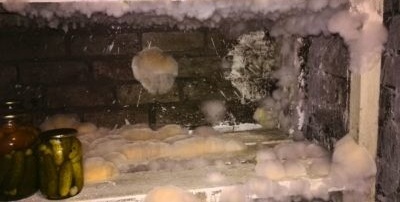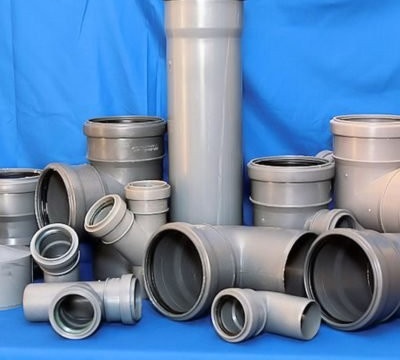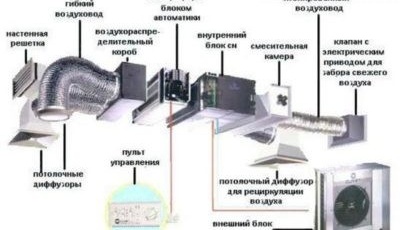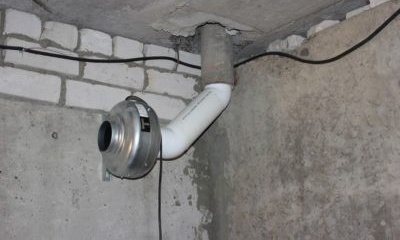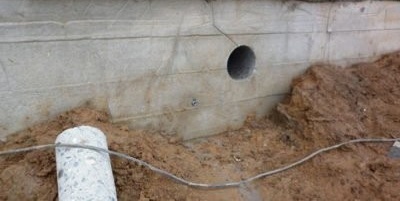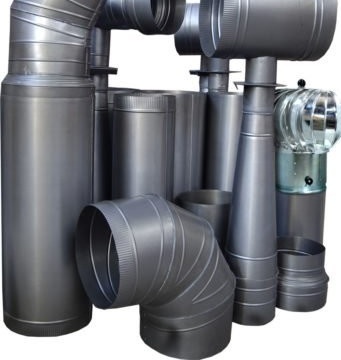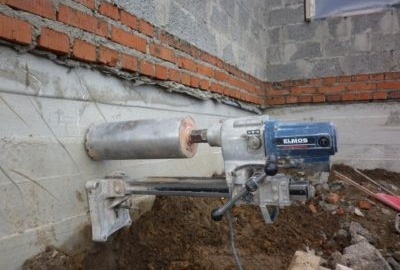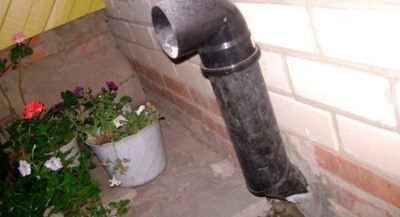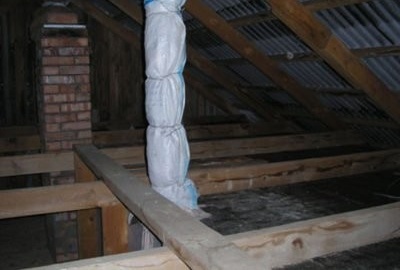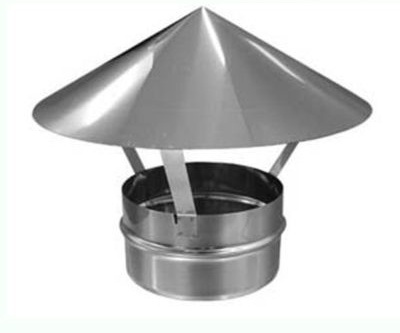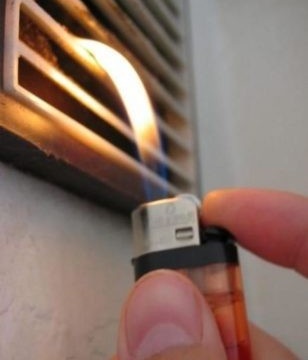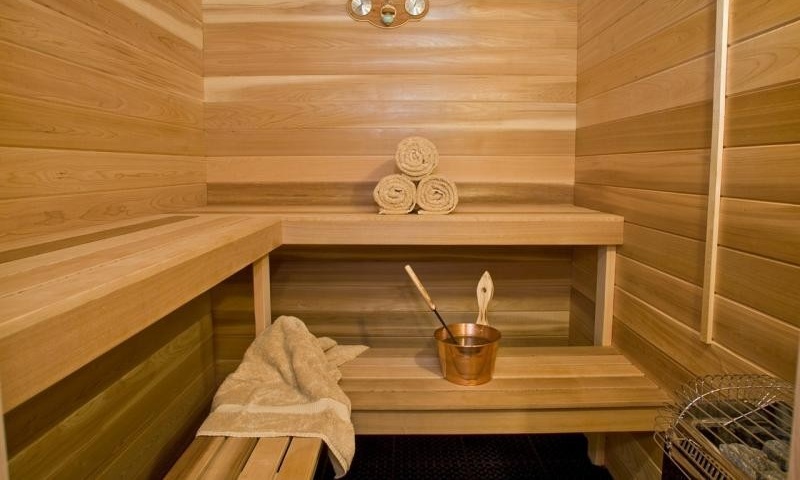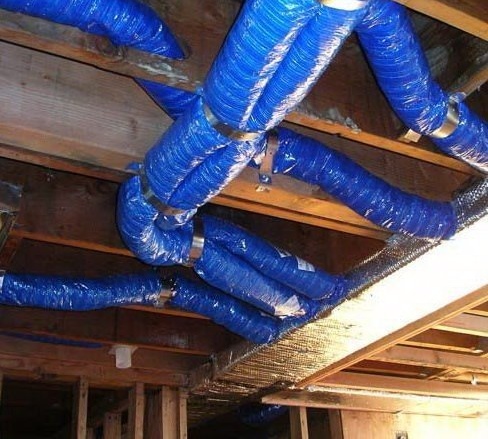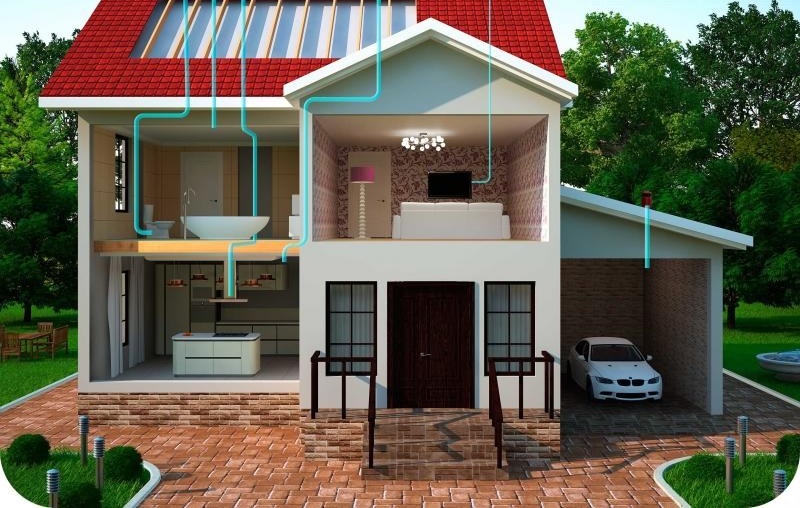Basement ventilation of a private house - installation and installation
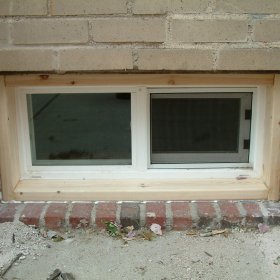
Most private houses are equipped with basements, which provide storage of agricultural products and home conservation. In the cellars home workshops, gyms, storage rooms or games rooms are organized. Regardless of the functional purpose of the room, located below the zero mark, it is important to provide fresh air to the basement with ventilation. This will create favorable humidity and temperature conditions of the room, prevent the appearance of dampness, which reduces the shelf life of household supplies and gradually destroys the base of the building. Let us dwell in detail on the issues of creating reliable ventilation of the basement, calculation methods and installation features.
Content
Why is a basement ventilation system necessary
Many, unfortunately, mistakenly underestimate the need to ventilate the basement, which is not only the room used to store food, but also the foundation of the building, perceiving increased loads.
Neglect of ventilation and the lack of normal air exchange create unfavorable conditions for the storage of agricultural products, reduce the strength of building structures. In conditions of increased humidity in the basement, mold and fungus develop.
Equipping the basement with a ventilation system will provide a comfortable microclimate and favorable living conditions in a private house. The design of ventilation communications is carried out at the design stage. Many paid attention to the supply air lines and outlets equipped in the foundation of the building.
Through these channels, external air enters the basement. However, if there are problems with ventilation, it is possible to ensure the movement of air flows by properly installing ventilation devices in an existing room.
The ventilation of the basement will save homeowners from increased moisture concentration, prevent the formation of mold, ensure the safety of supplies, and also extend the life of the building, which will retain attractiveness and warmth for many years.
The ventilation system is a complex of air communications that provide air circulation, comfortable temperature and normal humidity.
Calculation and device
The ventilation communications device is carried out on the basis of the project and preliminary calculations. To ensure air circulation, it is necessary to take responsible calculations.
Choosing the diameter of the air lines intended for supply and removal of air masses, be guided by the following rule: 25 sq. cm airways are able to provide air exchange in the cellar on an area of 1 square. meter.
For example, for ventilation of a basement with an area of 12 square meters. meters you must use the air line with a diameter of 300 square meters. see Knowing the formula for determining the circumference S = πR², it is easy to calculate the radius of the ventilation duct. For the case under consideration, the value is 9.8 cm. By rounding the value, we get the diameter of the trunk equal to 20 cm. In the case of pipes with a rectangular cross section, be guided by the value of the area obtained by calculation. The proposed calculation method allows you to tentatively determine the size of the ducts without taking into account the intensity of circulation.
For effective ventilation of the basement, the air in the room should be replaced with fresh air masses at least 2 times during the hour. The selection of the performance of the forced ventilation system is carried out by multiplying the basement volume by the coefficient of the rate of air renewal in the room.
Define the volume of updated air for a basement of 50 square meters. meters and a height of 2 meters. Multiplying the basement area by height, we get the volume. Its value will be 100 cubic meters. meters. If it is necessary to replace the air twice during an hour, multiply the volume of the room by the multiplicity factor. We get: 100x2 = 200 cubic meters. meters per hour. The obtained value corresponds to the required performance of forced air supply.
Ventilation networks, depending on the type of air exchange system, may consist of metal or plastic pipes, as well as fans.
To ensure the flow of air to the basement of the building, the following types of ventilation are used:
- Natural air exchange system. The principle of circulation of air masses is based on the difference in temperature difference inside the room and on the outside of the basement. The design is quite simple - it includes a supply pipe and an exhaust pipe. The classic type of circulation occurs by filling the basement with cold air while simultaneously letting out heated air masses.
- Forced air circulation. It provides for the use of special fans, automation elements, and, if necessary, air heating devices, the installation of which requires significant costs. Air circulation is carried out by forcing a fan of street air into the basement. After a while, the fans will take out the stagnant air outside the premises.
On your own, at low cost, it is easy to mount a system of elementary natural circulation, as well as a forced air exchange system.
Further, we will dwell in more detail on the features of the device of ventilation systems.
Features of natural air circulation
The natural flow of air into the basement is due to the difference in internal and external temperature, causing air to move through the pipes. Due to this simple property, fresh air from the street through the supply line enters the basement and displaces the musty and moist air from the room through the exhaust duct.
The positive aspects of the natural circulation system are the insignificant costs associated with the installation, and the simplicity of the design.
The main elements of the natural circulation system are:
- A supply line equipped with a protective net at the inlet and designed for fresh air.
- An exhaust duct that exhausts air from the room and is equipped with a visor at the outlet, and in the basement room there is a condensate collection device.
- Products made in the basement of the building and designed to ensure air exchange.
Despite the simplicity of the system, the main disadvantages are the poor efficiency of air mass circulation and the dependence of traction on natural factors (air pressure and wind speed) that affect the efficiency of air exchange.
The classic version of creating a natural circulation circuit is provided at the design stage. According to the results of calculations, the throughput of highways is determined, taking into account the volume of the basement. The organization of supply and exhaust ventilation does not need special engineering knowledge. The main thing is to ensure the opposite arrangement of the highways, to correctly make the marking corresponding to the diameter.
The exhaust duct should be located in the ceiling of the room with a highway elevation of at least 0.6 meters relative to the upper point of the building. The supply line entering the basement is introduced from the opposite area of the room at a distance of 0.2–0.4 m from the base. Optimum conditions for natural air exchange are ensured by the use of highways with a diameter of 12–15 cm.
Forced air exchange system
The operation of the forced ventilation system is based on the movement of air masses using fans. The forced feed device can be equipped with filter elements, heating and temperature control devices, depending on the degree of equipment of the system and customer requirements.
The main elements of the forced ventilation system:
- Air lines through which the movement of air flows.
- Pressure plant, providing the intensity of air mass exchange.
- A device for providing a comfortable temperature, designed to condition the basement.
- Ventilation channels that carry out the process of air exchange.
- Air intakes necessary to ensure air circulation.
- Diffusers combining air lines of various sections.
- Tees used when necessary combining air flow.
The forced ventilation system has the following advantages:
- the possibility of battery life, regardless of natural factors;
- the presence of automation that controls the air flow and temperature;
- the ability to install in premises of increased area.
The increased costs associated with the acquisition of equipment and installation, as well as the complexity of the installation operations make it difficult to mass use a forced air supply device.
Install forced ventilation equipment according to a pre-designed scheme. Be sure to carry out a calculation that determines the intensity of air exchange and the cyclical operation of the system.
When equipping the basement room with a forced ventilation device, take into account a set of factors related to the operation features, degree of automation, room area and equipment layout.
Having studied the literary sources, based on the recommendations of specialists, it is easy to independently develop a layout scheme and perform calculations. This will allow saving financial resources and independently, in more detail, study the design features of forced ventilation.
DIY ventilation installation
The independent implementation of work on the installation of air circulation equipment in the basement requires a detailed familiarization with the equipment features and the principles of ventilation.
Depending on the size of the basement, install a specific air circulation system:
- Install natural ventilation with a basement area of less than 50 square meters.
- Install forced ventilation with an enlarged basement area.
The installation of ventilation equipment in the constructed building can be done on its own. You will need a puncher, grinder and drill to make holes and form channels in the base of the building, walls, basement and ceiling. Let us dwell in detail on the stages of the implementation of measures for the installation of ventilation communications.
Installation steps
With a small basement area, to ensure air exchange, make small channels (vents) located on opposite walls in the basement of buildings.
Install grids to prevent rodents from entering the basement.
Mount the dampers on the holes inside the basement for adjusting the volume of incoming air.
The natural air exchange system does not require the use of special devices. Air masses enter the basement of a private house through the supply line and exit through the tension channel. An important condition is the location of the ducts in opposite areas of the basement.
Not always vents provide the desired air exchange efficiency. In this case, we recommend installing ventilation of the supply and exhaust type.
Install as follows:
- Prepare metal or plastic pipes for the supply line and exhaust duct with a diameter of 10-15 cm.
- Mark the opposite sections of the basement in which you need to make holes for the supply of air ducts.
- Drill holes in the basement and ceiling of the basement for the dimensions of the air lines.
- Install the supply pipe, ensuring that the outer part is 1 meter from the zero mark, and the inner part is at the level of 0.2–0.5 m from the floor.
- Insert the exhaust pipe into the ceiling opening, which should exit through the opening in the roof of the building.
- Fix the exhaust line, providing a distance above the building ridge of more than 50 cm, necessary for traction.
- Insulate the surfaces of the exhaust pipe that extend outside the building and are in the attic.
- Eliminate gaps between pipes in the socle and ceiling part, using sealant.
- Install a condensate collector in the basement on the exhaust duct, equipped with a tap to remove liquid.
- Fasten the cap at the top of the exhaust pipe to protect the pipe from rain and to help increase traction.
- Mount the protective grilles on the supply ducts.
Installing a small axial fan in the exhaust line, designed to operate in the exhaust mode, will increase the intensity of air circulation, providing forced ventilation.
Use clamps for fastening pipes, securely fasten system elements during installation.
The efficient operation of the supply and exhaust system is guaranteed with a basement area of 20–40 square meters. m. For larger rooms will require the installation of forced air exchange. The installation of complex ventilation systems equipped with air conditioning and temperature control devices is recommended to be entrusted to professionals.
Hardware Installation Video
The presented video will provide additional information on the installation of elements of the ventilation system.
Checking ventilation performance
Checking the effectiveness of the ventilation system does not require special training.
To determine the quality of air exchange, light a match or a lighter and bring it to the exhaust line. If combustion stops, then the concentration of carbon dioxide in the basement is increased.
The problem is solved by increasing the cross-sectional area of the supply line. The reduced diameter of the inlet channel impedes the flow of air masses. To regulate the intensity of air exchange, equip the pipes with a slide gate, which allows you to adjust the air supply rate.
After making sure that the ventilation is working, use the dampers to adjust the cross-section of the channels, ensuring optimal air exchange.
Video: how to make the ventilation of the basement with your own hands
The video shows a simple self-made version of the natural ventilation of the cellar.
It is easy to provide effective ventilation of the basement on your own. It is important to carefully consider the technical features of the ventilation system and, having little construction skills, reliably complete the installation of elements. Independent installation of the air exchange device will ensure a comfortable humidity in the basement, as well as save financial resources. Having developed a clear plan of action, proceed to equip the basement of a private house with a ventilation device.

